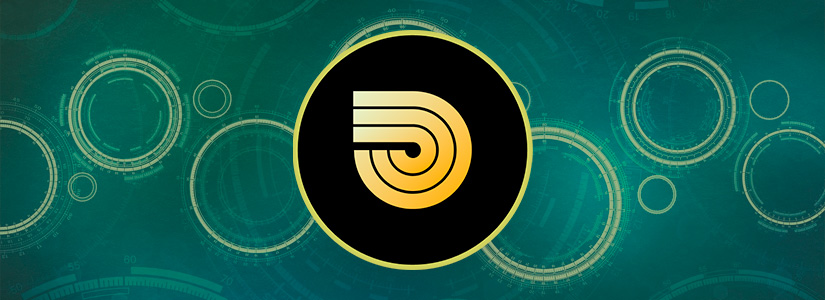The Paladin Protocol emerges as a symbol of decentralized innovation and modern trust. Rooted in the ethos of transparent collaboration and technological rigor, this initiative captivates those who understand the significance of programmability and privacy in the blockchain era.
Its journey reflects a commitment to fostering an ecosystem where open-source principles meet robust decentralized design, catalyzing fresh perspectives on data sovereignty and user empowerment. At an intersection where privacy meets powerful governance strategies, the Paladin Crypto Protocol entices developers and enthusiasts alike to reimagine the boundaries of what decentralized systems can achieve.
The vision behind the Paladin Protocol resonates with the global community’s demand for scalable, secure, and adaptable trust frameworks, an aspiration that is gaining momentum across diverse digital arenas. This exploration into the Paladin Protocol celebrates innovation that transcends traditional paradigms, inviting you to ponder the transformative potential embedded in these emerging constructs.
As we delve deeper into its narrative, the discussion unfolds not merely as a technical review, but as an invitation to embrace a future where decentralization redefines collaboration and resilience. Come along with us on this journey to explore the transformation of digital trust as seen through the perspective of the Paladin Crypto Protocol.

What is the Paladin Crypto Protocol?
Paladin Crypto Protocol emerges as a luminous frontier in the decentralized digital ecosystem, an innovation that marries trust, transparency, and programmable privacy. Founded on May 12, 2021, it has rapidly gained recognition for redefining digital trust in today’s interconnected world.
At its core, Paladin Protocol embodies a commitment to open collaboration and decentralized decision-making, drawing on the principles of community governance and open-source development. Its inception marked not only a breakthrough in innovative design but also the beginning of a fresh chapter in the evolution of digital economies.
Eschewing conventional frameworks, the protocol introduces a versatile approach that inspires ambition toward enhanced security, stability, and efficiency. By inviting developers, enthusiasts, and stakeholders to engage with its robust ecosystem, Paladin Crypto Protocol champions a vision where privacy and programmability converge.
This vibrant ecosystem resonates with the aspirations of a global community seeking novel ways to forge secure and dynamic digital interactions. As the protocol evolves, its transformative impact on the digital trust landscape serves as a reminder of the potential unlocked when cutting-edge technology meets community spirit.
Indeed, it stands as a testament to dedicated innovation, urging the curious to explore new horizons in a future where decentralization empowers all for tomorrow.
What is the Usage of Paladin Protocol?
Becoming familiar with what is the usage of Paladin Protocol is a must if you seek to understand how the platform works. Paladin fuels a dynamic shift in decentralized governance by unlocking token participation across DeFi ecosystems.
Its protocols empower stakeholders to transform passive holdings into active governance leverage. Using vote boosting and delegation mechanisms, Paladin enables users to amplify influence, optimize rewards, and streamline decision-making. Features like pledge delegation create a marketplace where voting power is efficiently allocated and returned as rewards.
Serving as a bridge between security and user functionality, Paladin redefines how decentralized finance harnesses collective governance, paving the way for an engaged, resilient digital economy. It is a tool for enhancing participation and efficiency in the decentralized landscape.

How Does Paladin Protocol Work?
Paladin Protocol harnesses the power of smart contract innovation to reshape the digital governance landscape while integrating programmable privacy on the EVM. It works as a decentralized platform where governance token holders can unlock and leverage the value of their tokens.
At its core, the protocol allows users to deposit digital assets into specialized pools, known as PalPools, in exchange for PalTokens representing their stake and yield. This process enables token holders to lend their voting power or temporarily borrow additional influence, thereby strengthening their position within the network’s governance structures.
Underlying the protocol lies a suite of modular smart contracts that manage token delegation, lending, and borrowing. Users can easily transfer or delegate their voting rights using intuitive interfaces, ensuring that collective decision-making remains agile and responsive.
Furthermore, the protocol incorporates a programmable privacy layer, empowering users to tailor the visibility of sensitive interactions without sacrificing transparency. This balance between fluid governance participation and privacy control sets Paladin Protocol apart as a groundbreaking solution.
By harmonizing decentralized trust, kinetic token economics, and customizable privacy, the protocol invites communities to experiment with new models of influence, participation, and digital security, where innovation prevails.
What is Paladin Warlord?
Paladin Warlord is a unique governance index engineered to automate the management of Convex (CVX) and Aura (AURA) positions. By depositing these tokens, users mint WAR, an ERC-20 token that represents their stake in the system. Staked WAR earns protocol rewards and vote incentives while auto-compounding any earned AURA or CVX to generate more WAR.
Offering exposure to dual ecosystems, Paladin Warlord minimizes risk and volatility. Its design enables users to access enhanced voting power and efficient yield generation, making it an innovative tool for DeFi participants seeking to maximize governance benefits. Paladin Warlord redefines active participation in DeFi.

What is the PAL Token?
PAL Token is the foundation of Paladin’s decentralized ecosystem. It is a straightforward but effective ERC20 token that drives innovative governance and engagement. It serves as a versatile unit for engaging in decision-making, incentivizing active contributions, and unlocking unique yield opportunities.
Beyond its primary role in supporting transparent, community-driven governance, PAL is integral to future liquidity mining initiatives and a refined native tokenomics system. With its streamlined functionality and inherent value, PAL Token embodies the protocol’s commitment to evolving digital trust, empowering users, and redefining decentralized interactions in today’s dynamic blockchain landscape.
Conclusion
The Paladin Protocol stands as a beacon of decentralized innovation and robust trust. It redefines digital governance and empowers communities through programmable privacy, agile token economics, and secure participation. Paladin’s evolving ecosystem encourages us to rethink collaboration and data ownership, leading us toward a safe, empowering, and transformative digital future. This vision brings together ambitious thinkers and drives ongoing advancement.










